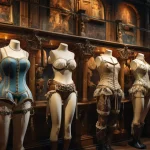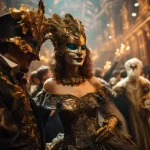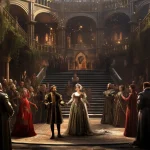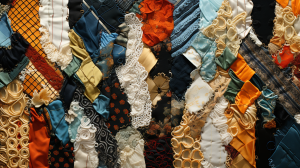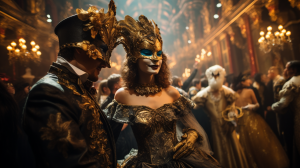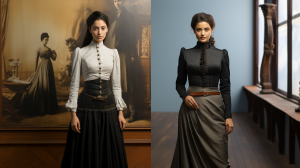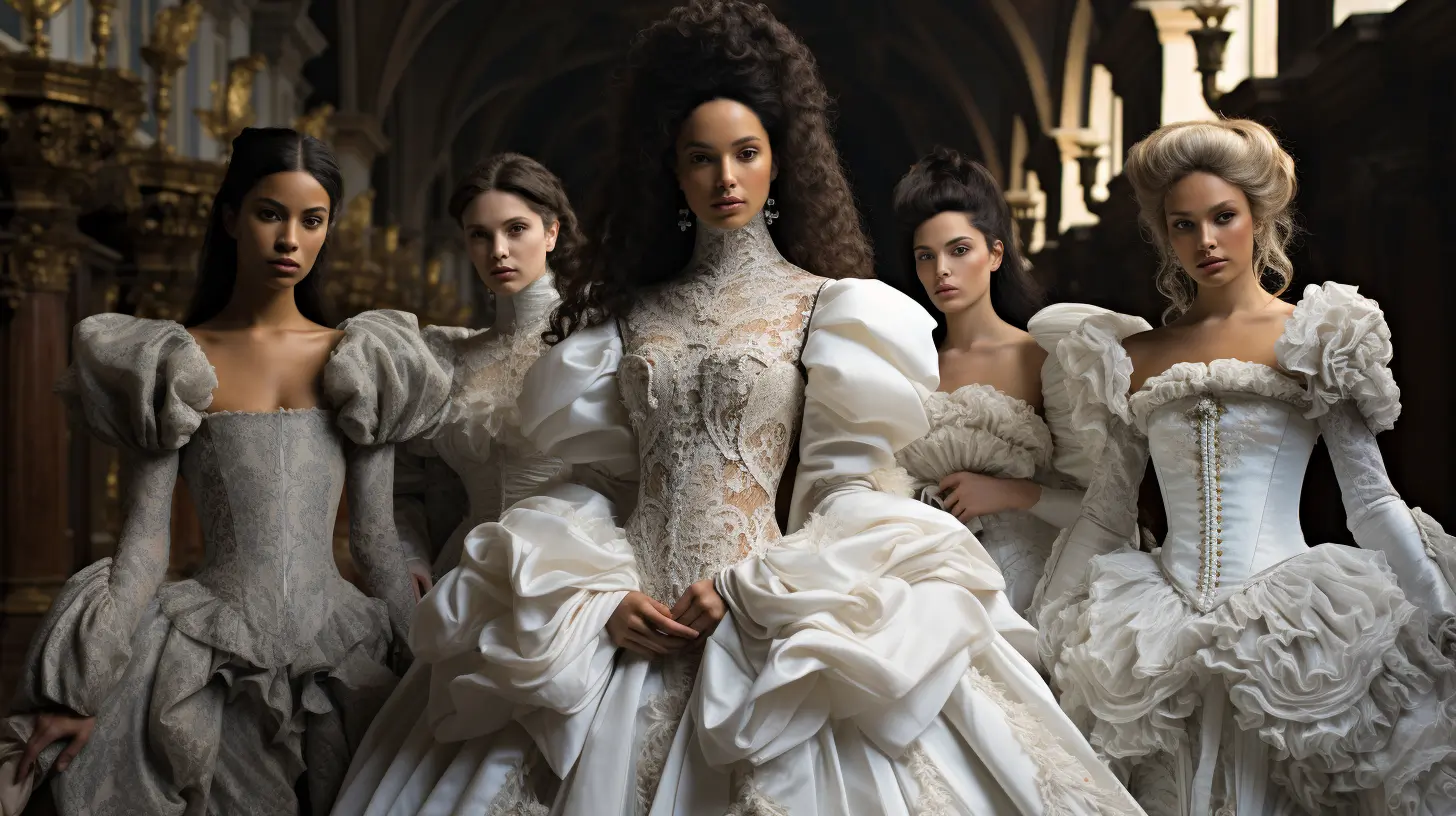
🌟 Portrait of an Aristocrat: Dressing for Success in Baroque Europe 🌟
In the grand spawn of history, there exist moments when human creativity and expression take center stage. The Baroque era, a captivating chapter in the annals of European history, stands as a testament to the heights that artistry, culture, and societal change can reach. Imagine, if you will, a time when Europe was adorned with opulence, when extravagance was the order of the day, and when clothing served as a canvas upon which dreams of power and prestige were painted.
Welcome, dear reader, to a mesmerizing journey through the aristocratic world of Baroque Europe, a world where fashion was more than mere attire—it was a statement, a language, and a symbol of one’s place in the intricate web of society. In this exploration, we shall unravel the intricate threads of Baroque aristocratic fashion, delving into its profound symbolism, its luxurious materials, and its lasting influence on the world of style.
The Baroque Era Unveiled
Ah, the Baroque era—a tapestry woven with threads of artistic brilliance and cultural transformation. As we step further into this captivating period, we find ourselves enveloped in an era defined by its extravagance and its deep impact on European society.
Historical Context: 🕰️ In the early 17th century, Europe was emerging from the shadows of the Renaissance into a new era, the Baroque. This transition was marked by significant historical events, such as the Thirty Years’ War and the emergence of powerful monarchies. The social fabric was evolving, and this transformation was intricately woven into the fabric of fashion.
Artistic Expression: 🎨 The Baroque era was not merely a historical epoch but a celebration of artistic expression. It embraced the dramatic, the ornate, and the extravagant. Paintings, sculptures, and architecture of the time exhibited a heightened sense of emotion and grandeur. It was within this artistic landscape that Baroque fashion found its canvas, inspiring and being inspired by the masterpieces of the period.
In our exploration of Baroque aristocratic fashion, we cannot disregard the profound influence of these historical and artistic undercurrents. These influences would go on to shape the opulent and symbolic world of clothing in Baroque Europe.
The Aristocratic Elite
In the grand theater of Baroque Europe, a select few played the leading roles, and these individuals were none other than the aristocratic elite. They occupied the upper echelons of society, commanding both admiration and envy in equal measure.
Social Hierarchy: 🎩 Baroque society was organized with a precision that rivaled the most intricate tapestries. At its pinnacle sat the aristocracy, a class characterized by its immense wealth, hereditary privileges, and profound influence over politics and culture. The aristocrats were the epitome of social prestige, and their clothing served as a visual proclamation of their elevated status.
Aristocratic Lifestyle: 👑 Life within the aristocratic circles was nothing short of opulence. Palatial estates, extravagant banquets, and lavish parties were the norm. But perhaps what truly set them apart was their impeccable taste in fashion. These aristocrats were not mere consumers of clothing; they were trendsetters and arbiters of style. Their fashion choices rippled through society, inspiring admiration and imitation.
In our exploration of Baroque aristocratic fashion, it is imperative that we understand the unique position held by this elite class and how their attire was a reflection of their power and prestige.
The Language of Clothing
In the grand theater of Baroque Europe, a select few played the leading roles, and these individuals were none other than the aristocratic elite. They occupied the upper echelons of society, commanding both admiration and envy in equal measure.
Social Hierarchy: 🎩 Baroque society was organized with a precision that rivaled the most intricate tapestries. At its pinnacle sat the aristocracy, a class characterized by its immense wealth, hereditary privileges, and profound influence over politics and culture. The aristocrats were the epitome of social prestige, and their clothing served as a visual proclamation of their elevated status.
Aristocratic Lifestyle: 👑 Life within the aristocratic circles was nothing short of opulence. Palatial estates, extravagant banquets, and lavish parties were the norm. But perhaps what truly set them apart was their impeccable taste in fashion. These aristocrats were not mere consumers of clothing; they were trendsetters and arbiters of style. Their fashion choices rippled through society, inspiring admiration and imitation.
In our exploration of Baroque aristocratic fashion, it is imperative that we understand the unique position held by this elite class and how their attire was a reflection of their power and prestige.
Materials of Opulence: Crafting Baroque Attire
In the realm of Baroque aristocratic fashion, where opulence and extravagance reigned supreme, the choice of materials and fabrics was of paramount importance. This section unveils the sumptuous textiles and craftsmanship that transformed clothing into works of art.
Opulent Textiles: 🌟 The fabrics that adorned Baroque aristocrats were nothing short of luxurious. Imagine garments fashioned from the finest silk, a fabric that exuded richness and sheen, a tactile reminder of wealth and prestige. Brocade, with its intricate patterns woven into the fabric, added depth and texture to clothing, making it a visual spectacle. Velvet, with its soft pile and deep colors, was favored for its regal appearance. Each of these textiles was carefully selected, not just for its tactile qualities but also for the status and symbolism it carried.
Craftsmanship of the Masters: ✂️ Crafting Baroque attire was an art form in itself. Tailors and seamstresses possessed unparalleled skills, turning bolts of fabric into masterpieces. The precision and attention to detail were remarkable. Picture expertly tailored corsets and stays, sculpting the body into the desired shape. Elaborate ruffles and lace, meticulously stitched, added an extra layer of intricacy to garments. It was a testament to the dedication and craftsmanship of artisans that such clothing could exist.
The Dance of Colors and Patterns: 🎨 Color was an essential element in Baroque fashion. Rich jewel tones like deep burgundy, royal blue, and emerald green were favored by the aristocracy. These colors not only conveyed opulence but also held symbolic meaning. Gold and silver threads often interwoven in fabric patterns created a luminous effect, a dazzling display of wealth. Baroque attire was a canvas for intricate motifs and emblems, telling stories of heritage and heraldry. Patterns like fleur-de-lis and arabesques were beloved embellishments, adorning garments with elegance and sophistication.
In this section, we’ve embarked on a journey through the opulent materials and exquisite craftsmanship that defined Baroque aristocratic fashion. The fabrics, the artistry, and the play of colors and patterns were integral to the visual extravagance of the era.
Crowning Glory: Elaborate Hairstyles and Accessories
As we continue our journey through the opulent world of Baroque aristocratic fashion, we arrive at a realm where artistry knows no bounds. In this section, we will explore the intricate and extravagant world of Baroque hairstyles and accessories, a testament to the creativity and flamboyance of the era.
Wig Culture: 💇♀️ Baroque Europe witnessed the dawn of a wig culture that would leave a lasting impression on fashion history. Aristocratic men and women alike adorned themselves with wigs of immense proportions. These wigs were not mere hairpieces; they were towering works of art. Imagine elaborate coiffures adorned with feathers, ribbons, and even miniature sculptures. Wigs served as a symbol of status and sophistication, with the most extravagant ones reaching astounding heights.
Elaborate Headpieces: 👒 In addition to wigs, headpieces played a significant role in Baroque fashion. Women sported bonnets adorned with lace and ribbon, framing their faces with elegance. Men often wore tricorn hats, which featured distinctive triangular shapes and embellishments. Feathers, plumes, and jewels were common adornments, adding a touch of grandeur to every headpiece.
Jewelry and Accessories: 💍 Baroque aristocrats were not ones to skimp on accessories. Jewelry became an essential part of their attire, with necklaces, brooches, and rings crafted from precious metals and gemstones. Pearls, diamonds, and rubies were favored, adding shimmering accents to their ensembles. Fans were not just practical accessories; they were also used to convey non-verbal messages, a form of silent communication among the elite.
In this section, we have unraveled the extravagant world of Baroque aristocratic hairstyles and accessories. These elements added an extra layer of opulence to their attire, leaving a lasting legacy of flamboyance and creativity.
Sculpted Elegance: Corsets, Stays, and Structured Garments
Our journey through the lavish world of Baroque aristocratic fashion takes us now to the very core of opulence—the art of tailoring and structured garments. In this section, we will delve into the sculpted elegance of corsets, stays, and the meticulous craftsmanship behind these iconic Baroque garments.
Silhouette of the Era: 🌟 Baroque fashion was characterized by a distinct silhouette, one that sculpted the body into a form of grace and opulence. Central to achieving this desired shape were corsets and stays. Corsets, typically made of stiff materials like whalebone, were designed to cinch the waist and lift the bust, creating an hourglass figure. Stays, while similar in function, were often worn as a separate garment, providing support and structure to the torso. These undergarments were essential elements of Baroque attire, shaping the body to fit the fashion ideal of the time.
The Art of Tailoring: ✂️ The tailors of the Baroque era were artists in their own right. They possessed a deep understanding of fabric, structure, and the human form. The precision and attention to detail that went into crafting corsets and stays were remarkable. Every stitch was carefully placed, and the choice of materials was of the utmost importance. Imagine expert hands creating intricate patterns and embroidery on these undergarments, turning them into works of art.
Fashion as Sculpture: 🖼️ Baroque fashion was often described as a form of living sculpture. The structured garments not only shaped the body but also allowed for the display of opulent textiles and intricate details. Layers of fabric, lace, and embroidery were visible, adding to the overall grandeur of the attire. These garments were not simply worn; they were celebrated as masterpieces of design and craftsmanship.
In this section, we have uncovered the secrets of corsets, stays, and structured garments that defined the silhouette and elegance of Baroque fashion. The artistry of tailoring and the shaping of the body were integral to the visual extravagance of the era.
The Psychology of Color: Symbolism in Baroque Attire
As we continue our exploration of Baroque aristocratic fashion, we must delve into the intricate world of color symbolism. In this section, we will uncover the profound psychological impact of color choices in Baroque attire, a realm where shades and hues held deeper meanings than met the eye.
Rich and Regal Hues: 💎 Baroque aristocrats were known for their opulent and sophisticated use of color. Deep, jewel-toned shades were favored, each carrying its own symbolism. Imagine a lavish gown in rich burgundy, a hue associated with power and nobility. Royal blue, reminiscent of the heavens, symbolized the divine right of kings. Emerald green, the color of nature’s bounty, represented growth and prosperity. These color choices were not arbitrary; they conveyed messages of status, spirituality, and wealth.
Gold and Silver: 🌟 The use of precious metals in clothing was not limited to fabrics alone. Gold and silver threads were often incorporated into garments, creating a shimmering effect. Gold, with its association with the sun, symbolized enlightenment and divine favor. Silver, representing the moon, signified purity and clarity. These metallic accents added a touch of celestial splendor to Baroque attire, elevating it to new heights of magnificence.
Patterns and Motifs: 🎨 Patterns and motifs on Baroque garments were not merely decorative; they held symbolic significance. Imagine intricate embroidery featuring motifs like the fleur-de-lis, a symbol of royalty and power. Arabesques, with their graceful, swirling lines, represented unity and eternity. These patterns, often woven with gold and silver threads, added layers of meaning to clothing, turning them into visual narratives.
In this section, we have explored the psychology of color and symbolism in Baroque attire. The choices made in color, the use of precious metals, and the incorporation of patterns all contributed to the rich tapestry of meaning woven into these extravagant garments.
The Art of Adornment: The Language of Accessories
Our journey through the intricate world of Baroque aristocratic fashion continues, and now, we turn our attention to the language of accessories. In this section, we will uncover the significance of accessories in conveying status, identity, and personal expression in the Baroque era.
Exquisite Embellishments: ✨ Accessories were not merely add-ons; they were an essential part of Baroque attire. Imagine a gentleman’s cravat adorned with a lustrous pearl pin or a lady’s gown accentuated with delicate lace cuffs. These embellishments were more than decorative; they were statements of refinement and taste. Accessories served as a means of personal expression, allowing individuals to showcase their creativity and style.
Jewelry as Symbols: 💍 Jewelry held a special place in the hearts of Baroque aristocrats. Rings, necklaces, and earrings were crafted with precision and adorned with gemstones of exquisite quality. These pieces often bore symbols and motifs that held personal meaning. A brooch might feature a miniature portrait of a loved one, while a locket concealed a secret keepsake. Each piece of jewelry was a testament to the wearer’s identity and the bonds they held dear.
The Power of Parures: 👑 A parure was a matched set of jewelry and accessories, a symbol of wealth and sophistication. Imagine a complete set comprising a tiara, necklace, earrings, and bracelets, all designed to complement each other perfectly. Parures were often commissioned to mark special occasions like weddings or important social events. These sets were not just adornments; they were a reflection of one’s status and social standing.
So far, we have explored the art of adornment and the language of accessories in Baroque aristocratic fashion. From delicate lace cuffs to exquisite parures, these embellishments played a vital role in conveying identity and personal expression.
Fashion as Social Commentary: Baroque Europe’s Mirror
Our exploration of Baroque aristocratic fashion takes an intriguing turn as we delve into the role of clothing as a reflection of societal values and changes. In this section, we will uncover how Baroque attire served as a mirror to the complex dynamics of Baroque Europe, echoing the era’s social, political, and cultural shifts.
Reflection of Power and Status: 👑 Baroque fashion was far from frivolous; it was a powerful tool for those in positions of authority. The opulent clothing worn by aristocrats symbolized their status and influence. Picture a nobleman’s ornate robe embroidered with symbols of his family’s heritage, a clear assertion of his lineage and power. These garments were not just expressions of wealth but also statements of authority.
The Influence of Courts: 🏰 The courts of Baroque Europe held immense sway over fashion trends. The attire worn by royalty and nobility set the standard for the rest of society. The extravagant and elaborate clothing worn at court functions filtered down to the lower classes, inspiring imitation. This hierarchical influence of the courts on fashion highlighted the significance of attire as a means of conveying societal hierarchy.
Cultural Signifiers: 🌍 Baroque fashion was replete with cultural references. Clothing choices often reflected regional and national identities. Imagine the distinctive attire of a Spanish grandee, with his wide-brimmed hat and ruffled collar, or the sumptuous fabrics and lace of a French noblewoman. These cultural signifiers showcased the diversity and richness of European society during the Baroque era.
In this section, we have explored how Baroque attire served as a reflection of power, authority, and cultural identity. It was not just clothing; it was a canvas upon which the complexities of Baroque Europe were painted.
The Legacy of Baroque Fashion: Influence and Revival
As our journey through the Baroque era nears its conclusion, we must reflect on the lasting legacy of Baroque aristocratic fashion. In this section, we will explore how the opulence, creativity, and symbolism of this era continue to influence contemporary fashion and revive the spirit of the Baroque.
Revival in Haute Couture: 👗 The spirit of the Baroque lives on in the world of haute couture. Renowned designers draw inspiration from the extravagant silhouettes, sumptuous fabrics, and opulent embellishments of the Baroque era. Picture a modern gown with exaggerated ruffles and lace, paying homage to the romantic aesthetics of Baroque fashion. The legacy of the Baroque is evident on haute couture runways, where designers breathe new life into this historical style.
Influence on Costume Dramas: 🎬 Baroque fashion has also left its mark on the world of cinema and television, especially in costume dramas set in the past. Imagine the intricate and historically accurate costumes in period films, meticulously crafted to transport viewers back to the Baroque era. These productions capture the essence of the time, showcasing the enduring appeal of Baroque attire.
A Timeless Aesthetic: 🕰️ The allure of Baroque fashion lies in its timeless aesthetic. The grandeur and elegance of this era continue to captivate fashion enthusiasts and historians alike. Its influence extends beyond clothing, impacting art, interior design, and even contemporary accessories. Think of a modern chandelier with intricate Baroque-inspired detailing, or a piece of jewelry featuring Baroque motifs. These elements evoke the spirit of an opulent past.
In this section, we have explored the enduring legacy of Baroque fashion, from its influence on haute couture to its presence in the world of entertainment and design. The Baroque era’s opulence and creativity continue to inspire and captivate, reminding us that fashion is not just clothing; it is a reflection of history and artistry.
A Glimpse into the Future of Fashion: Baroque Reimagined
In our final stretch of this fascinating journey through Baroque aristocratic fashion, we turn our gaze to the horizon, where the Baroque era meets the future. In this section, we will explore how contemporary designers and creators are reimagining and reinventing the opulence, style, and symbolism of Baroque fashion for the modern age.
Contemporary Baroque Revival: 🌟 The Baroque’s influence on modern fashion is undeniable. Today’s designers often incorporate elements reminiscent of the Baroque era into their collections. Picture a runway adorned with gowns featuring voluminous sleeves and intricate lacework, paying homage to the historical grandeur. These contemporary interpretations infuse the spirit of the Baroque with a fresh and innovative twist.
Baroque-Inspired Artistry: 🎨 The legacy of Baroque fashion extends beyond clothing. Artists and craftsmen draw inspiration from this era’s opulence, creating pieces that evoke the spirit of the Baroque. Imagine a contemporary painting featuring a subject adorned in Baroque attire, or a piece of furniture with ornate carvings reminiscent of Baroque motifs. These works of art celebrate the timeless appeal of the Baroque aesthetic.
Digital Baroque: A Virtual Renaissance: 💻 In the digital age, the Baroque finds new life in virtual realms. Imagine a digital fashion show where avatars showcase elaborate Baroque-inspired ensembles, pushing the boundaries of creativity. Virtual reality experiences transport users to opulent Baroque palaces, allowing them to explore the era’s fashion in immersive environments. The fusion of technology and Baroque style opens up exciting possibilities for the future of fashion.
In this section, we have glimpsed into the future of fashion, where the Baroque era continues to inspire and shape the creative landscape. From contemporary fashion collections to artistic expressions and digital realms, the legacy of Baroque aristocratic fashion lives on, reminding us that the past is a wellspring of innovation.
A Tapestry Woven in Time: Baroque Aristocratic Fashion Unveiled
As we conclude our enthralling journey through the annals of Baroque aristocratic fashion, we are left with a rich tapestry woven from the threads of opulence, symbolism, and timeless beauty. In this final section, we reflect on the significance of our exploration, tracing the intricate threads that have led us to a deeper understanding of this captivating era.
Rediscovering Baroque Elegance: 🌟 Our journey began with a deep dive into the opulent attire of Baroque aristocrats, where sumptuous fabrics, elaborate lacework, and intricate embroidery were the order of the day. We marveled at the grandeur of their clothing, each piece a testament to the wealth and status of its wearer. In this section, we unearthed the secrets behind the attire, revealing how every garment was a reflection of the individual and the society they inhabited.
Symbols and Significance: 💎 The language of Baroque fashion spoke through symbols and motifs, conveying messages of power, identity, and cultural pride. From the regal fleur-de-lis to the delicate rose, we uncovered the hidden meanings behind these embellishments. Each detail told a story, connecting us to the past and offering a glimpse into the complex world of Baroque Europe.
Fashion as a Time Capsule: 🕰️ Our journey took us through time, allowing us to witness the evolution of Baroque fashion and its enduring legacy. We explored how the Baroque aesthetic continues to inspire contemporary designers, artists, and creators, ensuring that this era remains alive and relevant in the 21st century. It is a testament to the timelessness of beauty and creativity.
A Lasting Connection: 🌐 As we conclude this exploration, it is clear that fashion is more than clothing; it is a reflection of history, culture, and the human spirit. Baroque aristocratic fashion serves as a bridge that connects us to a bygone era, reminding us of the artistry, ingenuity, and storytelling embedded in every garment.
Our journey through the Baroque era has been a captivating odyssey, an unraveling of threads that have brought us closer to understanding the past and appreciating the enduring allure of fashion. As we bid farewell to this remarkable era, let us carry with us the knowledge that clothing is not just a garment; it is a narrative waiting to be explored.



